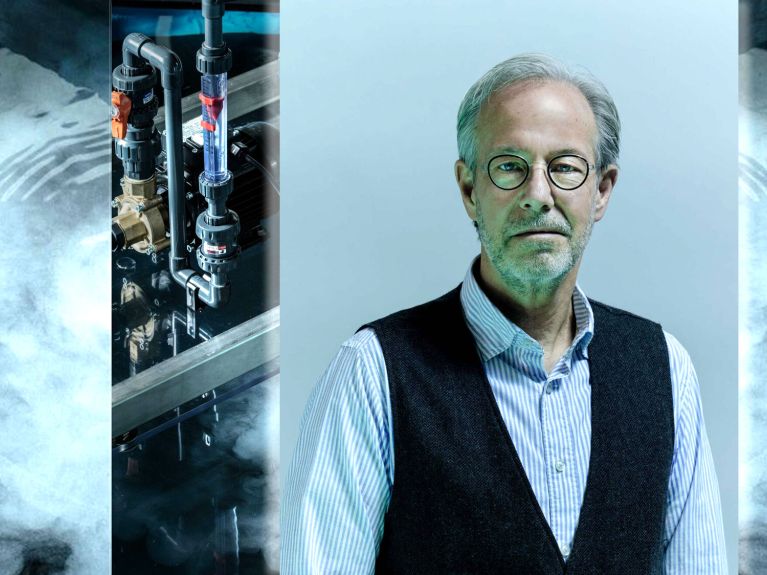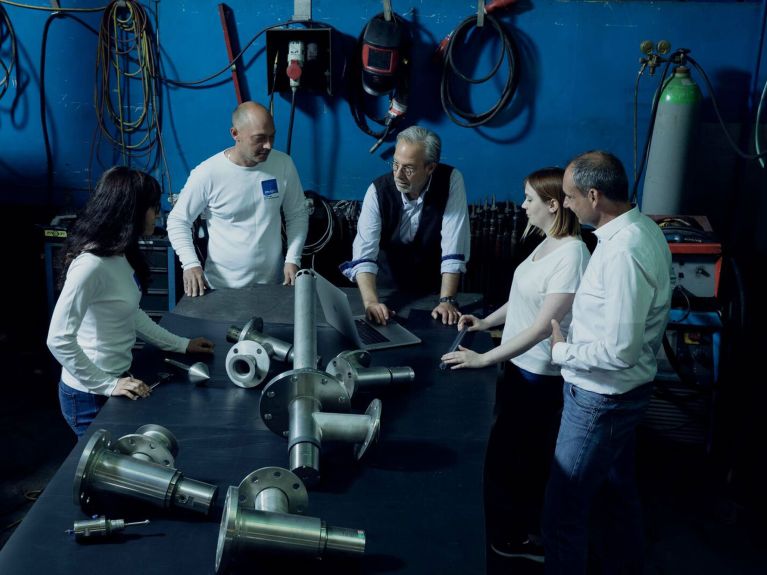Solving the plastics problem
Germany is relying on disruptive innovation. We present four ideas on the threshold of realisation. Part 2: microflotation

We live in a world full of plastic. It has been estimated that eight billion tonnes have been produced since 1950. Only 30% of that amount has been recycled and most of the remaining 70% has made its way into the oceans. Sunlight and the movement of the waves make it smaller and smaller until the pieces are only 0.1 to 5 millimetres in size. This microplastic gets into the food chain and, as a result, also into the human body. On average we absorb the weight of a credit card in a week.

The engineer Roland Damann aims to change this – with microflotation. This technology involves generating high concentrations of microscopically small air bubbles, only one third of a human hair in diameter, in the water. Almost all the solid particles in the water attach to these bubbles and rise with them to the surface, where the layer of dirt can simply be removed. This technology is already used in the preliminary cleaning of water in sewage treatment plants. According to Damann, the performance of these systems could be increased by up to 50% with a minimal increase in area.
Success rate of 99.7% already achieved in lab
The process works equally efficiently when it comes to removing microplastic particles from water. In the laboratory Damann and his team were able to extract 99.7% of the plastic particles in water taken from the river Weser. Damann and his team are now experimenting with the prototype of a free-floating device that will enable the system to work in open bodies of water. You have to imagine this like a huge, upside-down fruit basket floating in the water, explains the engineer. A kind of swimming ring is attached to the top, while valves underneath produce the cloud of microbubbles that attract the plastic particles like a magnet, hold them and carry them up to the surface.
“In its free-flow variant, microflotation is the only technological and economic solution for taking microplastic particles between 0.1 and 5 millimetres in size out of the water in a recyclable state using no chemicals and only a very low energy input,” says Damann in a podcast by the Federal Agency for Disruptive Innovation (SPRIND), which is funding his project. The next step involves a system for the surface area of still bodies of water, such as rainwater retention basins or reservoirs. Then the project wants to move on to running waters.
You would like to receive regular information about Germany? Subscribe here:


